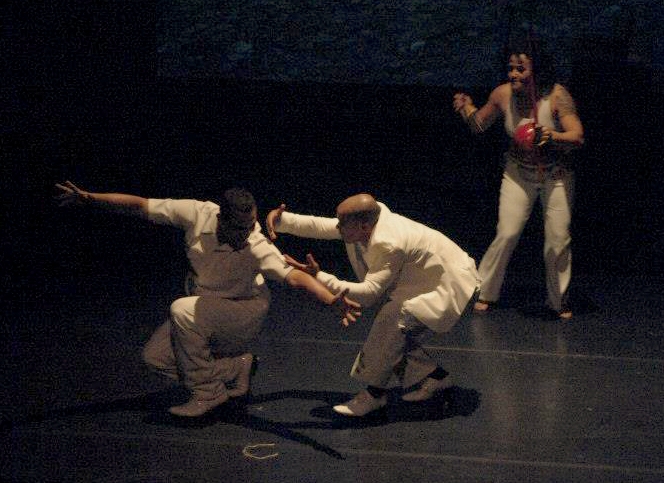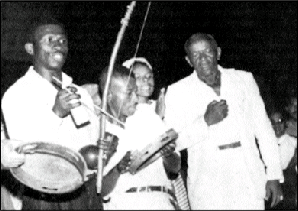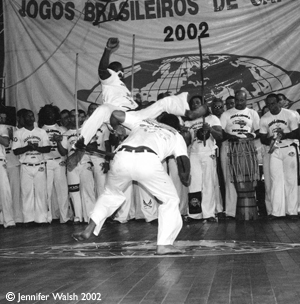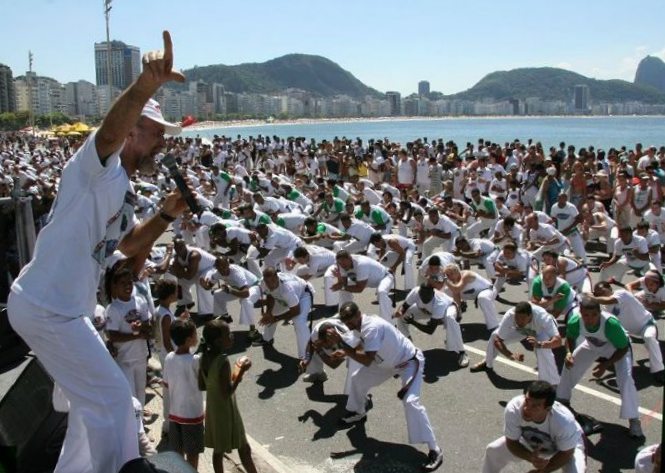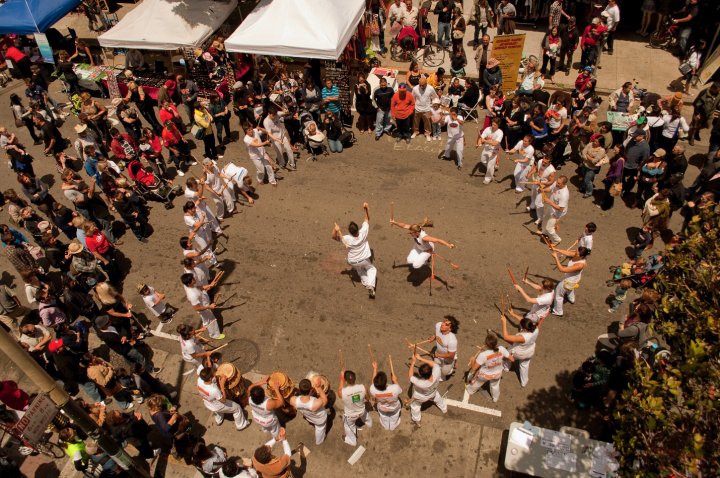What is Capoeira?
Capoeira (pronounced ka-poo-ey-da) is an Afro-Brazilian martial art form that incorporates acrobatics, dance, percussion, and songs in a rhythmic dialogue of body, mind, and spirit. Two opponents play each other inside a circle formed by the other players, who create rhythm for the game by clapping, singing, and playing traditional instruments.
In a capoeira game, players camouflage self-defense movements such as kicks with playful acrobatics and dance-like moves, spontaneously creating strategy to fool their opponent and catch them off guard.
Brief History
Capoeira developed as a result of more than three hundred years of slavery in Brazil. Enslaved Africans were taken by Portuguese colonists from various cultures in Africa. In Brazil, generations of enslaved African people shared the cultural customs, dances, rituals, and fighting techniques that would combine to become capoeira. Slaves used capoeira to fight to escape and resist capture, but concealed its combative purpose through music, song, and dance.
After the abolition of slavery in Brazil in 1888, capoeira was illegal and its practitioners were socially ostracized for more than 40 years. Mestre Bimba, the legendary Capoeira Master, rescued the art form and proved its legitimacy, opening capoeira’s first official school in Bahia, Brazil, in 1932.
Capoeira was born as an expression of resistance and resilience that brought spiritual and emotional empowerment. The cultures of enslaved Africans, Brazilian indigenous peoples, and Portuguese immigrants all contributed to the art of capoeira, and the art form is a reflection of the cultural and social integration of the diverse people comprising modern-day Brazil.
Capoeira has developed into a means of empowerment and a forum for social and cultural exchange. It is now an internationally respected art of grace and strength that combines ritual, self-defense, acrobatics, and music.
Capoeira Today
Capoeira helps people to approach conflict, fear, and uncertainty with greater confidence, determination, and humor. Ultimately, capoeira is a celebration of the joys of movement, music, physical expression, and strategy.
Today’s students, like the earliest practitioners of capoeira, learn to translate struggles into celebrations, to believe in their abilities, and to understand the richness of sharing with others.
Increasingly visible in popular culture and mainstream media, Capoeira has gained respect as a martial art form throughout the world and has attracted millions of individuals from every part of the globe.
The Roda
A “roda” (pronounced “ho-da”) refers to the circle that capoeira players form, inside of which the game is played.
Those forming the roda are as important to the game as the two players inside—adding to the energy and rhythm of the game by clapping their hands, singing capoeira songs, and playing instruments.
The two players inside receive energy and support from the roda. As a metaphor for the circle of life, the capoeira roda illustrates that all individuals are important in the creation of the whole and that cooperation is essential.


